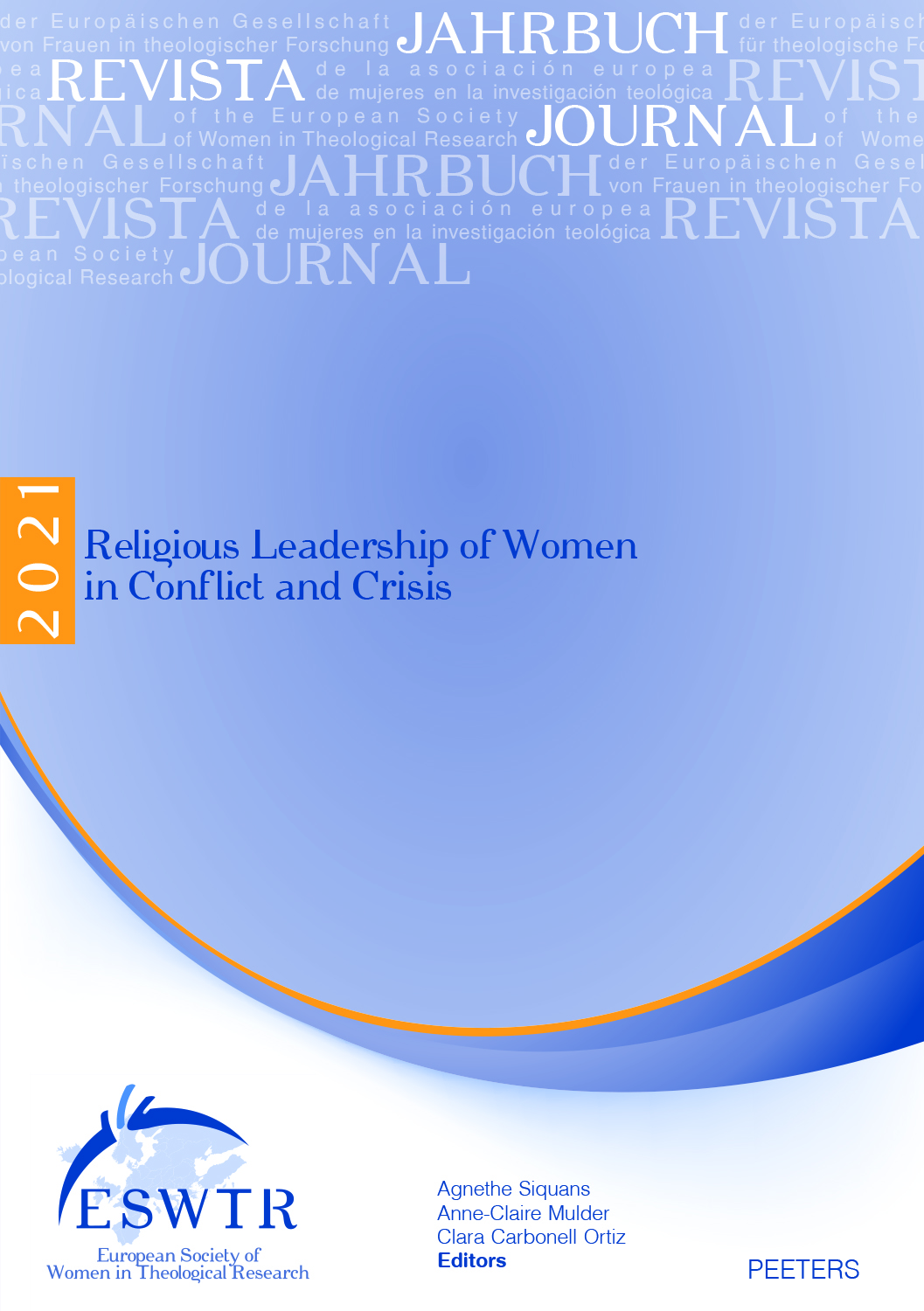 previous article in this issue previous article in this issue | next article in this issue  |

Preview first page |
Document Details : Title: The Junia Case, Once Again Subtitle: A Response to Esther Yue L. Ng, 'Was Junia(s) in Rom 16:7 a Female Apostle? And So What?' (JETS 63/3 [2020]: 517-533) Author(s): MARSCHALL, Priscille Journal: Journal of the European Society of Women in Theological Research Volume: 32 Date: 2024 Pages: 231-250 DOI: 10.2143/ESWTR.32.0.3293708 Abstract : In 2020, Esther Yue L. Ng published an article aimed at reopening the 'Junia(s) case' of Romans 16:7 ('Was Junia(s) in Rom 16:7 a Female Apostle? And so What?,' Journal of the Evangelical Theological Society 63/3). She challenged the consensus of 21st-century scholarship that the person named ΙΟΥΝΙΑΝ in Romans 16:7 was a woman apostle active in the first diffusion of the Gospel. As Matt H. Hamilton noticed in a review of recent scholarship, the article by Ng represents so far the most well-written and most challenging production of a wider 'anti-Junia' trend. It is therefore the aim of the current essay to provide a critical assessment of this article. Going through the three lines of argument mobilised by Ng (Junias could be the Greek rendering of the Hebrew masculine name Yehunni; Junia(s) was perhaps only 'well-known to the apostles' instead of being an apostle on her or his own; if a woman apostle, Junia did not have the same responsibilities as male apostles), this essay highlights a number of methodological shortcomings that run throughout the article. It also unveils the rhetoric of doubt Ng employs, which is particularly evident in the 'funnel' dispositio of her article. Finally, the present essay calls into question the 'axiom of unsuspicion' that Ng seems to adopt with regard to the role of androcentrism in the history of interpretation of Romans 16:7. Im Jahr 2020 veröffentlichte Esther Yue L. Ng einen Artikel, der darauf abzielte, den 'Junia(s)-Fall' von Römer 16,7 wieder aufzurollen ('Was Junia(s) in Rom 16:7 a Female Apostle? And So What?,' Journal of the Evangelical Theological Society 63/3). Sie stellte den Konsens der Wissenschaft des 21. Jahrhunderts in Frage, dass es sich bei der Person namens ΙΟΥΝΙΑΝ in Römer 16,7 um eine Apostelin handelte, die bei der ersten Verbreitung des Evangeliums aktiv war. Wie Matt H. Hamilton in einem Überblick über die jüngste Junia-Forschung feststellte, ist der Artikel von Ng die bisher am besten geschriebene und herausforderndste Arbeit einer breiteren 'Anti-Junia'-Tendenz. Ziel des vorliegenden Aufsatzes ist es daher, eine kritische Bewertung dieses Artikels vorzunehmen. Anhand der drei von Ng vorgebrachten Argumentationslinien (Junias könnte die griechische Wiedergabe des hebräischen männlichen Namens Yehunni sein; Junia(s) war vielleicht nur 'den Aposteln bekannt', anstatt selbst ein Apostel oder eine Apostelin zu sein; wenn Junia eine Apostelin war, hatte sie nicht die gleichen Aufgaben wie männliche Apostel) hebt dieser Aufsatz eine Reihe methodischer Schwächen hervor, die sich durch den gesamten Artikel ziehen. Er enthüllt auch die Rhetorik des Zweifels, die Ng anwendet und die besonders im Dispositiv des 'Trichters' ihres Artikels deutlich wird. Abschließend stellt der vorliegende Aufsatz das 'Axiom der Unverdächtigkeit' in Frage, das Ng im Hinblick auf die Rolle des Androzentrismus in der Auslegungsgeschichte von Römer 16,7 zu übernehmen scheint. En 2020, Esther Yue L. Ng publicó un artículo con el propósito de reabrir el «caso de Junia» en Rom 16,7 ('Was Junia(s) in Rom 16:7 a Female Apostle? And So What?,' Journal of the Evangelical Theological Society 63/3). La autora desafiaba el consenso de los estudiosos en el s. XXI según el cual el nombre personal ΙΟΥΝΙΑΝ que aparece en Romanos 16,7 pertence a una mujer apóstol activa en los primeros años de difusión del evangelio. Como Matt H. Hamilton señalaba en una recensión reciente sobre el estado de la cuestión, hasta la fecha Ng representa el estudio mejor escrito y argumentado de una tendencia «anti-Junia» más amplia. En consecuencia, el objetivo del presente artículo es ofrecer una evaluación crítica del artículo de Ng. Se analizan las tres líneas argumentales movilizadas por esta autora (Junias podría ser la adaptación griega de un nombre propio mascuilino hebreo, Yehunni; Junia(s) fue quizá solo «bien conocida entre los apóstoles» en lugar de ser ella misma una apóstol; y, en el caso de que Junia fuera una mujer apóstol, no tuvo las mismas responsabilidades que los apóstoles hombres) y se señalan numerosas deficiencias metodológicas que permean el artículo. También se identifica la retórica de sospecha que Ng usa, particularmente evidente en la disposición en embudo que se despliega en su artículo. Finalmente, el presente artículo pone en tela de juicio el «axioma de no sospecha» que Ng parece adoptar en relación al rol del androcentrismo en la historia de la interpretación de Romanos 16,7. |
 |


